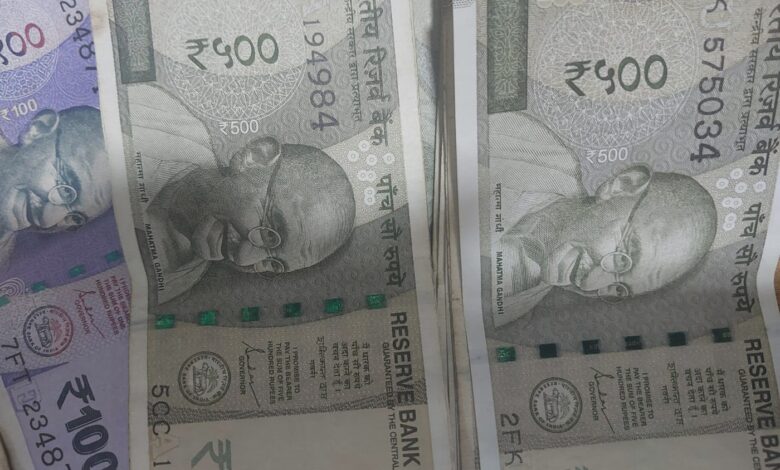Do you know Mahatma Gandhi was not the first choice for currency notes
Gandhi's photo was initially rejected for currency notes in the newly independent India. It was much later that Gandhi started adorning our currency notes.

A nation’s currency quietly tells the story of its history, culture and heritage through symbols and images it carries. Around the world, many countries honour their founding leaders on their notes: George Washington in the US, Mohammad Ali Jinnah in Pakistan, and Mao Zedong in China. In India, we have Mahatma Gandhi on our currency notes.
However, Gandhi’s photo was initially rejected for currency notes in the newly independent India. It was much later that Gandhi started adorning our currency notes.
How Gandhi was initially rejected but later appeared on notes
While it seems natural that Gandhi, as the Father of the Nation, would be the obvious choice for appearing on currency notes after independence, he wasn’t the first choice. So, who was? Here’s the story of how Gandhi eventually became the face of Indian money.
The Reserve Bank of India (RBI) narrates how the visuals on currency notes were chosen. “The transition of currency management from colonial to independent India was a reasonably smooth affair,” the RBI website says. “Midnight, August 14, 1947 heralded Indian independence from colonial rule. The Republic, however, was established on 26th January, 1950. During the interregnum, the Reserve Bank continued to issue the extant notes. The Government of India brought out the new design Re. 1 note in 1949. Symbols for independent India had to be chosen. At the outset, it was felt that the King’s portrait be replaced by a portrait of Mahatma Gandhi. Designs were prepared to that effect. In the final analysis, the consensus moved to the choice of the Lion Capital at Sarnath in lieu of the Gandhi Portrait. The new design of notes were largely along earlier lines.”
For many years after independence, the banknotes celebrated India’s rich heritage and progress. Notes from the 1950s and 60s showcased images of majestic animals like tigers and deer; symbols of industrial advancement like the Hirakud Dam and the Aryabhatta satellite; and the Brihadeeswara Temple. These designs reflected India’s newfound focus on development and modernization as well as its cultural heritage.
It wasn’t until 1969, during the celebration of Gandhi’s birth centenary, that his image made its first appearance on a currency note. This design showed Gandhi seated, with his Sevagram Ashram in the background.
In 1987, when the Rs 500 denomination was reintroduced by the Rajiv Gandhi government, nine years after the Janata Party government had carried out demonetisation of high value notes, Gandhi’s portrait appeared on the new Rs. 500 note for the first time. By the mid-1990s, the RBI launched the Mahatma Gandhi Series in 1996, featuring enhanced security features like watermarks and security threads. This marked a significant moment in India’s currency history, as Gandhi became the permanent face on all denominations of Indian notes.
Other choices for currency notes
In recent times, there have been occasional calls from various groups to replace Gandhi’s image on currency notes. Figures like Jawaharlal Nehru, Subhas Chandra Bose, Sardar Patel, and even deities Lakshmi and Ganesha have been proposed as alternatives.
In 2016, when asked if the government intended to replace or add photos of other leaders on currency notes, Minister of State for Finance Arjun Ram Meghwal stated, “A committee was formed during the UPA which has already decided that there is no need to change Mahatma Gandhi’s photo on the currency notes.” Then Finance Minister Arun Jaitley added, “The government takes a decision from time to time in consultation with the RBI on what currency to be circulated. The design and security features of banknotes are decided by the Government from time to time, in consultation with the Reserve Bank of India (RBI). The decision about the circulation of banknotes in the country is taken by the RBI.”
When asked whether the government proposed to introduce a currency note or coin featuring B.R. Ambedkar to mark his 125th birth anniversary, Meghwal replied that the government had already issued a non-circulation commemorative coin of Rs. 125 and a circulation coin of Rs. 10 denomination to mark Ambedkar’s anniversary, which was released by the Prime Minister on December 6, 2015.
In 2022, the Aam Aadmi Party (AAP) created a stir by suggesting that the images of Goddess Lakshmi and Lord Ganesha be featured on Indian notes to bring prosperity to the nation. This proposal sparked a heated debate, with opposition leaders and the ruling Bharatiya Janata Party criticising the suggestion.
Two years ago, Mahatma Gandhi’s great-grandson Tushar Gandhi expressed his unhappiness “for not including Bapu’s image” on the digital rupee design. In a tweet, he took a swipe at the RBI and the government for ignoring Mahatma Gandhi in the design of the digital currency.
‘Gandhi is inescapable’
American civil rights leader Martin Luther King Jr. once said, “Gandhi was inevitable. If humanity is to progress, Gandhi is inescapable. We may ignore him at our own risk.” Gandhi’s influence is, indeed, inescapable, from his presence on our currency (what people desire the most) to his ideals of peace, non-violence, and social justice that continue to guide India.
(Source: The Economic Times)

